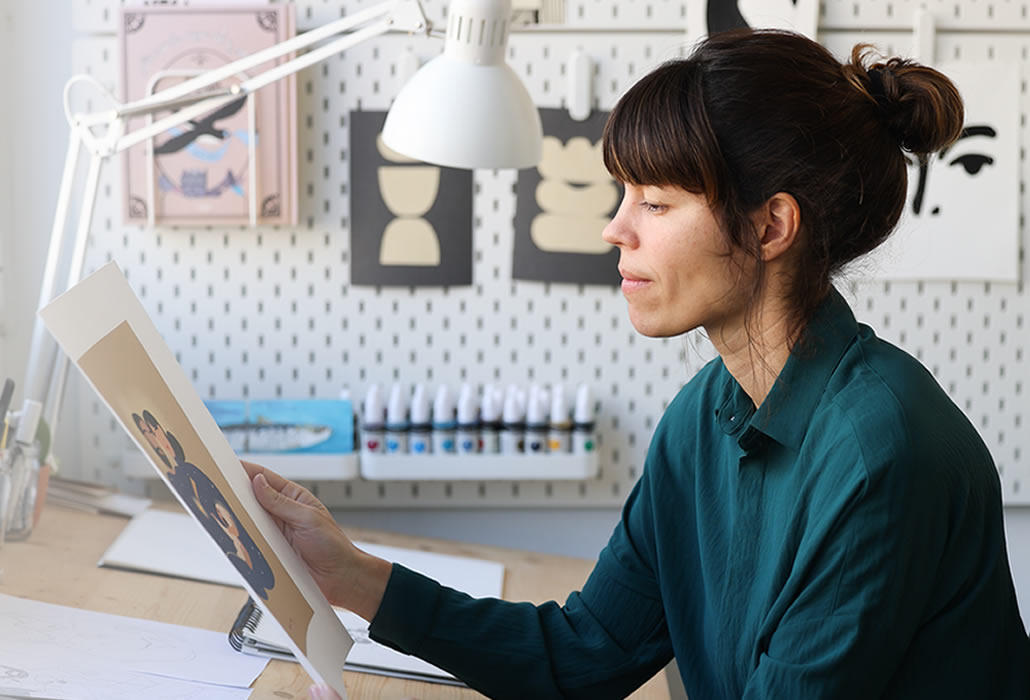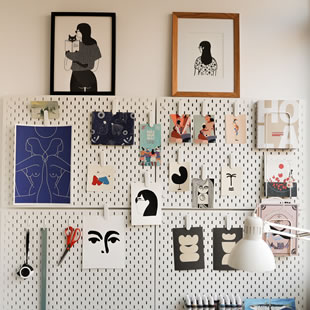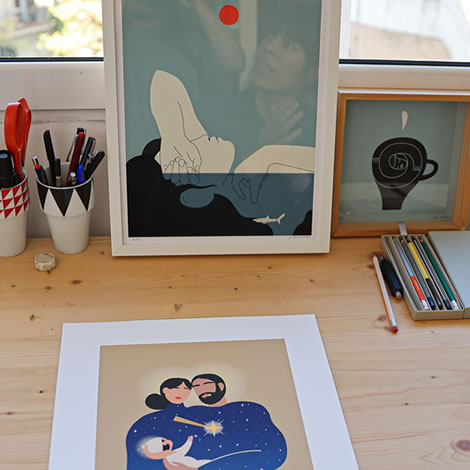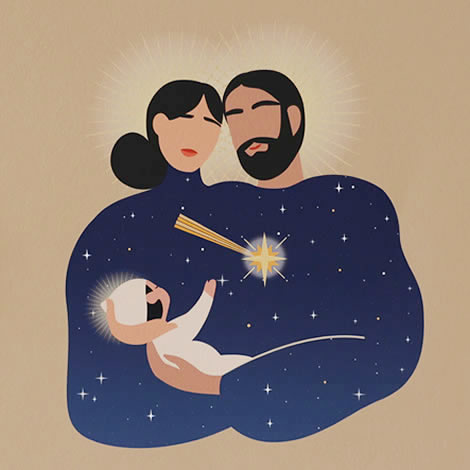Impars Project
Coordinator: Núria Garí
Interview
Text: Marcos Doespiritusanto
Photographs: Diana Segura
Looking at your CV, the fact you studied Audiovisual Communication at Pompeu Fabra University stands out. Why did you choose to study that and what were your professional aspirations at that time?
I have always been attracted to visual culture. I really like scripts and inventing stories. In other words, thinking of a narrative and then seeing how to dress that narrative. In truth, I now create visual communication, without any audio, of course, but we are talking about a visual world and how to communicate an idea. Therefore, my studies are not that far removed from what I am doing now.
When did you start drawing?
I’ve been drawing for as long as I can remember. I spent hours drawing since I was very young. I remember one summer I had spent many hours with my grandmother, who was a Bridge teacher (the card game), and when she was involved in her classes and championships with her friends, I would sit in a corner and draw for hours. She was delighted and would say: There’s no need to give this little girl anything, she’s easily entertained just with a few pencils! (She laughs).
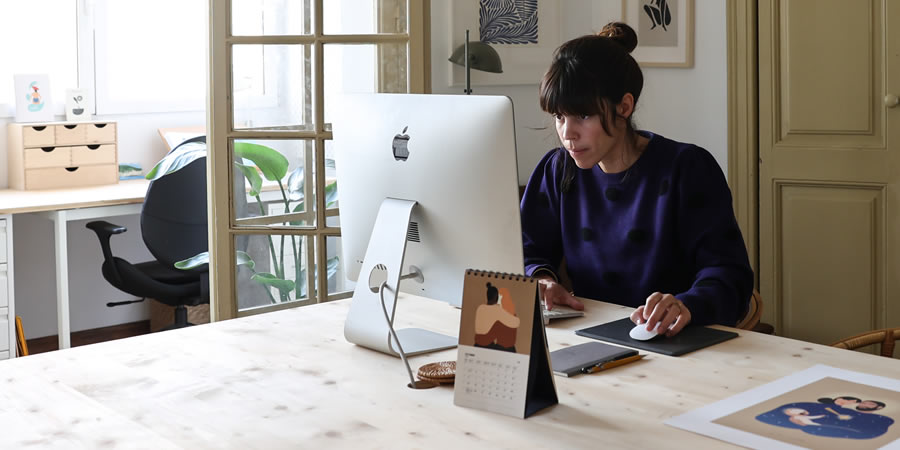
And, during university, you continued to draw…
Yes, I’ve always felt an impulse to draw. On the one hand, university was a different world and allowed me to discover new things. I was also interested in journalism. I was very open to try a lot of things. At the end of my degree, I suddenly felt the need to try illustration because I have always been very interested in the world of stories and children’s literature.
I was really intrigued and wanted to try it. It all began with a course at Escola Massana, where illustrator Àfrica Fanlo was my teacher, and she really opened my eyes. The first thing she told us in class was that, in order to be an illustrator, you did not need to know how to draw. We were all surprised. She insisted that you can also illustrate using collage or strokes of colour. That took away a lot of our fears and insecurities when drawing. With her, we discovered that illustrating is to shed light on an idea, content or text and that there are many ways to shed that light. Her classes were brilliant and a very revealing experience.
Then, from Escola Massana, you made the leap to the BAU University Design Centre to take a Postgraduate degree in Editorial Design. What was that experience like?
I took the course whilst I was at Massana. It turned out to be an interesting experience for me because I also like design and interior design magazines very much. As I said, I had very different interests and was very open. Editorial design also gave me many tools to be able to design posters, for example. I get a lot of this kind of work and, whether you want to or not, if you are asked to create a poster you also have to know how to design it. Quite often there is no designer responsible for designing the text on the poster or managing the white spaces. But I was taught all this during my postgraduate degree at the BAU. It all adds up and I think it is always very positive to continue to add new things.
When did you make the leap from the academic to the professional world and how did you start receiving your first orders?
It was complicated. When I started, everything was digital and the teacher recommended that we create a website with the small pieces of work we had already created as a way to introduce ourselves to our clients. So I did. I focused a lot on creating a strong portfolio.
At that time, I started working at an association called “Lectura fácil” (Reading Made Easy), which undertakes a very important social task of adapting texts of all kinds to make them accessible to people with reading difficulties, such as immigrants who have little knowledge of the language or older people who need a larger font size. I took care of the illustration side of things. It was my first big client and, thanks to this partnership, in fact, I was able to start exhibiting my first pieces of work.

What is your opinion about the situation facing young creatives in the context of the current crisis arising from the COVID-19 pandemic?
Illustration has always been a very difficult sector. Since I started we have continually been in a crisis. This is simply one more to add to the list. It is a highly afflicted sector. Strangely enough, in our country, most illustrators are women, young women who are often in quite a precarious situation. There are very few people who work exclusively in illustration and this forces you to perform a balancing act. It is like being a tightrope walker, that’s what I call it. You open up your skill set and do a little bit of everything.
Compared to other countries around us, do you think the situation here is more complicated?
I think so. Illustration work is not valued very highly here. It is beginning to gain a little more prestige, that is true. I have found that our work is starting to gain a little more recognition, but this has not translated into an improvement in working conditions.
You have worked in the press sector, for advertising agencies and also in the publishing world. What is the most compelling work area for you?
The publishing world is very satisfying because it gives you a lot of freedom to create the project and make it yours. It is not a sector that imposes their vision on you from the outset. In advertising there is definitely the chance that they might say to you: “If you don’t do this for me, there are fifty people behind you who will”. It is a more demanding sector, while publishing work is more relaxed. The problem is that it is not very well paid and, quite often, you take on this kind of work for a love of art. They are projects that I enjoy very much but that force you to maintain that balancing act, which is very delicate.
I also like poster art very much. One commission that I am very proud of is the poster for 10.000 km, a film by director Carlos Marques-Marcet, because it made a big impact. Although the producers chose the official poster for the film’s distribution, my poster was used in Greek cinemas, for example. It was lovely to represent the soul of a film, and I was very proud.
Are there any other projects you remember fondly?
The “Magic Line” project was very cool, particularly due to its social value. I was very excited because it got a lot of visibility and because it is a march for solidarity they do every year and there is a lot of communications work behind it.
You also created the image for the “Mulla-t per l’esclorosi multiple” (Get wet for multiple sclerosis) campaign. How do you take on these types of assignments for charity?
These projects require a different type of involvement. I get very excited about this type of project because, somehow, you know that your work transcends a particular collective and that what you are doing is full of social value. And that, quite rightly, is priceless.
Another of your latest projects is a wine label for the “Unique Vineyards” brand. What was that experience like?
It was an open call for six or seven illustrators and, over dinner, they explained what they wanted to communicate about a particular wine. And, almost like it was a game, we had to start sketching during dinner. Then, once at home, we were able to finish developing the idea. It was the first time I saw one of my drawings applied to a product and it was very satisfying.
I am now working with an Australian woman who makes handkerchiefs for women who have cancer, the brand is called Bravery.co. It was me who contacted her to start a project together and design one of her handkerchiefs. She herself suffered from cancer and came up with this idea and a percentage of the proceeds from selling the handkerchiefs goes to research.
I like to find projects that make me feel that I am contributing something useful to society.
What is Judit Canela like as a person? What are your hobbies and how do they influence your creativity?
I like music very much and I love to dance. I have studied contemporary dance all my life and now practice yoga a lot. I believe that more corporeal, more physical activities are important in jobs like mine, because you are sitting down and drawing all day. I spend many hours in front of the computer and yoga helps me clarify my ideas and generate a cleaner mental space.
How would you define your creative universe?
I will use words that others have said about me: Colourful, feminine, connected with nature and the everyday, but at the same time infused with a slight oneiric influence.
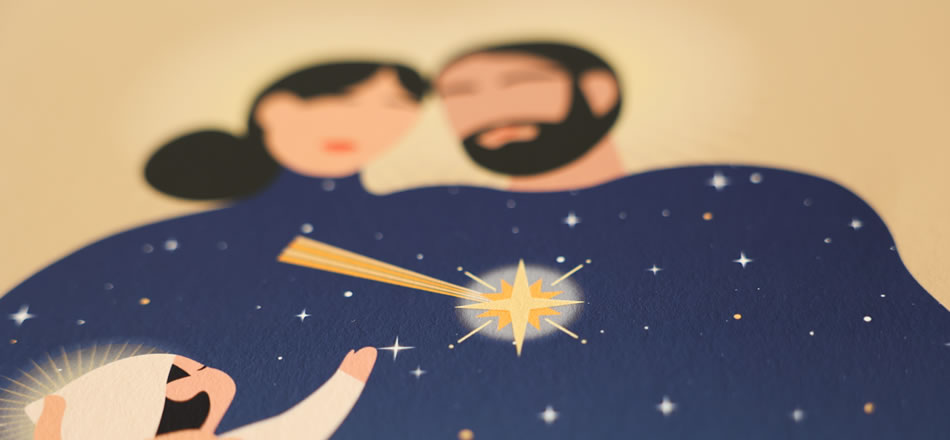
What techniques do you use when creating your artwork?
It just depends on the moment. I am now in a period when I am highly focused on the digital side of things. Previously I used mixed techniques and drew everything by hand then scanned it, then did the colouring using digital tools. Now, I just sketch by hand, and then move to digital. I am trying to acquire a lot of digital skills because it makes the job much easier and that is the direction all professionals are moving in.
Can you explain what your Christmas card for the University was based on?
The premise was clear: I had to incorporate Christian Nativity images but I was also asked to modernise this idea of the family in some way. And I realised that, by simply drawing a father, a mother and an infant, naturally, that image would already make reference to the idea of the birth of Jesus, with Joseph and Mary there as well.
It was a challenge to make it as simple as possible but also refer to the Christian world, to the idea of the Nativity. I opted to create an embrace between father, mother and infant to try to reflect a very intimate moment in keeping with Christmas.
Finally, if you had to describe yourself as an artist in five words, which ones would you choose?
I find the word artist difficult, it is a very grand word (she laughs). I would choose craftsperson, enthusiast, someone who is patient, curious and sensitive.
